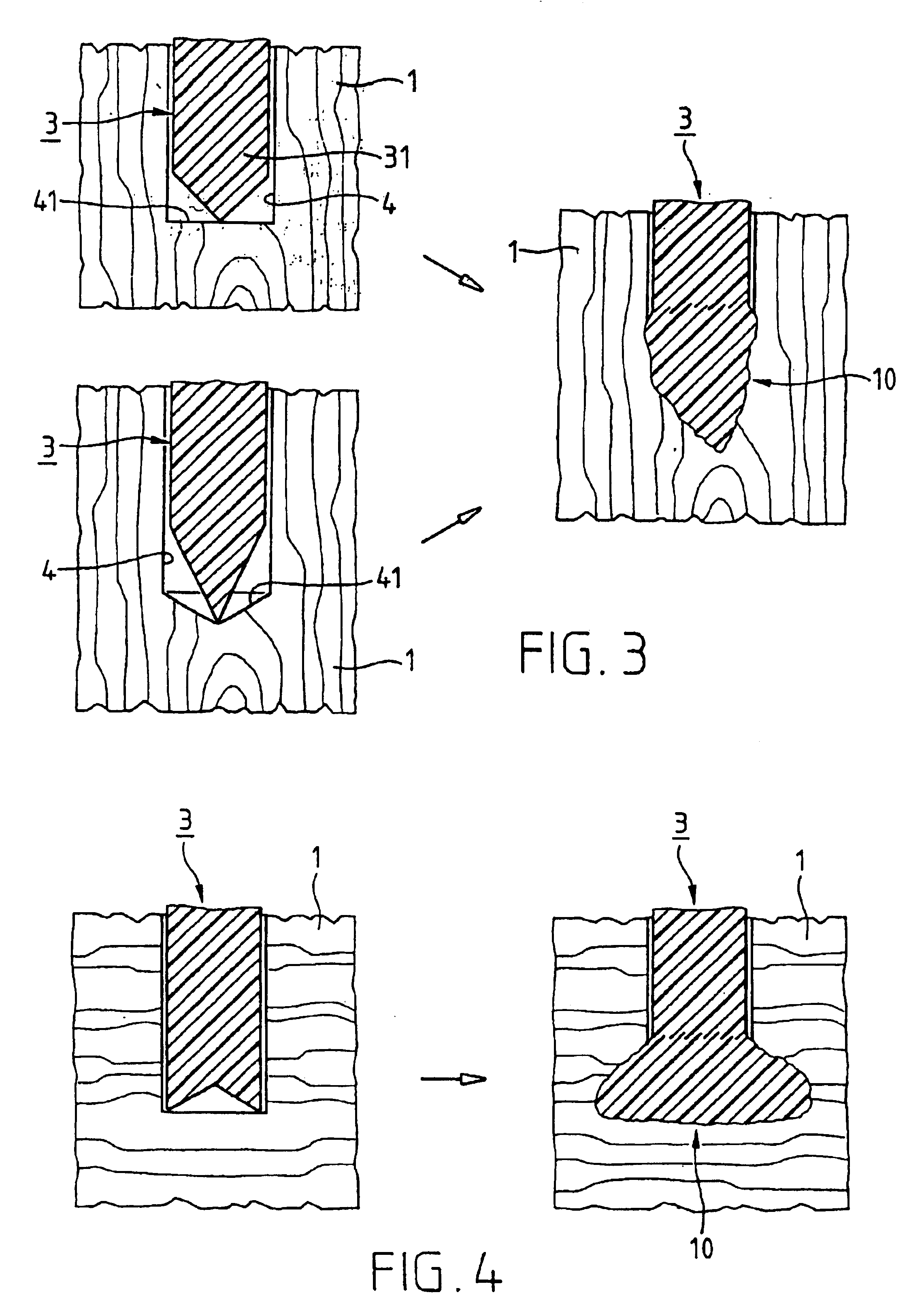Process for anchoring connecting elements in a material with pores or cavities and connecting elements therefor
a technology of pores or cavities and connecting elements, which is applied in the direction of furniture joining, dowels, lamination, etc., can solve the problems of weakening or even destroying the join
- Summary
- Abstract
- Description
- Claims
- Application Information
AI Technical Summary
Benefits of technology
Problems solved by technology
Method used
Image
Examples
Embodiment Construction
[0027]FIG. 1 shows a first embodiment of the inventive method which involves anchoring a pin-like joining element 3.1 with a head 32 in a first, wooden part 1 for joining first part 1 to a second part 2.1, which is, e.g., also made from wood.
[0028]In the vicinity of its inner end, joining pin 3.1 has a predetermined, first anchoring point 31 and at its outer end has a head 32. Bore 4.1 passes entirely through part 2.1 and has, in part 1, a closed end 41, the total length of bore 4.1 being less deep than the length of joining pin 3.1. At the open end of bore 4.1 is, e.g., a widened depression for countersinking head 32. The cross-section of bore 4.1 is so matched to the cross-section of the joining pin 1 that, without force expenditure, the pin can be introduced into the bore up to closed end 41 thereof. This is the first position of joining pin 3.1 in bore 4.1.
[0029]From the first position, joining pin 3.1 is pressed further into bore 4.1 with a pressing force F oriented substantial...
PUM
| Property | Measurement | Unit |
|---|---|---|
| anchoring depths | aaaaa | aaaaa |
| depth | aaaaa | aaaaa |
| diameter | aaaaa | aaaaa |
Abstract
Description
Claims
Application Information
 Login to View More
Login to View More - R&D
- Intellectual Property
- Life Sciences
- Materials
- Tech Scout
- Unparalleled Data Quality
- Higher Quality Content
- 60% Fewer Hallucinations
Browse by: Latest US Patents, China's latest patents, Technical Efficacy Thesaurus, Application Domain, Technology Topic, Popular Technical Reports.
© 2025 PatSnap. All rights reserved.Legal|Privacy policy|Modern Slavery Act Transparency Statement|Sitemap|About US| Contact US: help@patsnap.com



